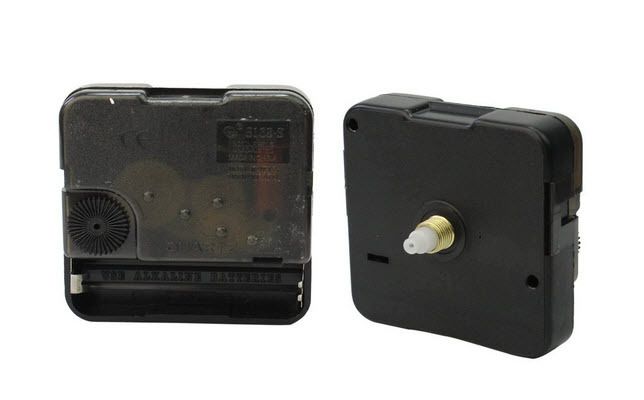Climate Clock Activities that Go down Jaws
 Clock activities are the core processors within watches that compute moment by minute where all the hands need to be pointing. Clockmakers begin with clock motions (additionally called clock motors) when they are exercising their first layout, as everything else practically hinges upon them. Over the centuries these little mechanical computer systems have actually turned into advanced devices efficient in some genuinely jaw-dropping points.
Clock activities are the core processors within watches that compute moment by minute where all the hands need to be pointing. Clockmakers begin with clock motions (additionally called clock motors) when they are exercising their first layout, as everything else practically hinges upon them. Over the centuries these little mechanical computer systems have actually turned into advanced devices efficient in some genuinely jaw-dropping points.
The majority of clock activities report temporal information at differing levels of detail as well as according to cycles of numerous lengths. The cycle could be 12 hours, 24 hours, a week, or a month. The degree of detail may be the min, the 2nd, and even something finer.
But the exact same mechanism can be adapted and also customized rather to report climate details. Sometimes, (e.g., trend degree) a cycle is involved, whereas in other situations there is simply a straight partnership in between the outcome of a sensor (temperature level, moisture) and the position on a dial.
Whatever kind of info is reported; it had much better be quite exact. If the timing or calibration is not rather close to the provided specification, people will soon learn that the details is undependable as well as stop trusting it. Normally, unless the clock system remains in sync with an atomic benchmark of some kind, some gathered error is unavoidable, yet there is a nearly universal assumption that a readjustment of greater than a couple of secs on a monthly basis approximately ought to not be essential.
Over the millennia male has become quite accustomed to the rhythms inherent in the everyday sunrise, the phases of the moon, his organic features, and also the seasons. Keeping exact track of all these points is also vital to him and also has been for nearly as long. The motion should keep up irrespective of just what is being tracked, whether pertaining to time or trend.
The old approaches utilized by clocks for accurately tracking time progressed over the course of years. A coiled spring or hanging weight put in rotational force or a gear or flywheel. An escapement system affixed to a swinging pendulum stood up to outright independent and regulated the rotational velocity.
Pendulums have a natural frequency to their swings based mainly on the attributes of length as well as weight. Modifications to these characteristics allow one to adjust the pendulum frequency. With delicate accuracy, then, one could calibrate the entire system such that it made a solitary tick for every single secondly.
In even more recent times, escapements and pendulums have been deserted, and the quartz crystal has taken over as the timing electrical generator for movements. Crystals discharge fast vibrations at an unwavering frequency that is a lot more than a 1-second speed. A collection of digital signs up and also collectors subdivides this initial frequency up until the tick/second pulse is acquired.
In both the traditional and modern-day techniques, then, a very precise one-second pulse is derived. From here it is fairly simple to gather ticks so that a minute is incremented every 60 seconds and so that an hour is incremented every 60 mins. Electronically this is performed with registers; mechanically it is completed with gear proportions.
Yet these are just the basics. There is basically no restriction to the class one could improve this structure. As well as some impacts truly go down jaws.
For example, you don't need to adhere to the common 12-hour layout, with a loads numerals or symbols spread around the periphery of the dial. You could cycle daily instead of two times, causing a 24-hour format.
You do not need to stop there either. You could expand the cycle right into an once a week or regular monthly one, where a 4th hand points at the day of the week or the day of the month, respectively.
clock movement
In terms of weather condition coverage, the trend level is cyclical, in fact a combination of both the lunar and solar cycles. So the fourth hand of a clock movement might point at the tide, supplied it is calibrated effectively for the stage of the moon and for regional problems. This result is rather striking.
Various other weather condition sensations worth reporting are not cyclical. Examples are the temperature level, the humidity, and the barometric pressure. In these cases, climate movements convert the value outcome by sensing units into numbers or placements along calibrated dials.
When the gadget is analog, several dials need to be superimposed such that they do not interfere with one another, and also the hands should be placed on concentric shafts. In the electronic instance, the numerous worths are simply presented numerically in separate areas. Both layouts are capable of being much appreciated and breathtaking.
One can additionally utilize accessories to drop jaws. As an example, many motors are equipped to trigger the buzzing of chimes on the hr and/or quarter hour. This feature is generally an add-on to whatever set of attributes already offered by the electric motor.
Another motion accessory is an accessory that oscillates in synchrony with the seconds. One can hook on a pendulum as well as convey the illusion of something old-fashioned like a grandfather clock. The pendulum can be enhanced nevertheless one wishes to make a stylistic declaration.
Whether you need something to inform time or to report the weather, you will locate conveniently offered many clock activities that go down jaws.

